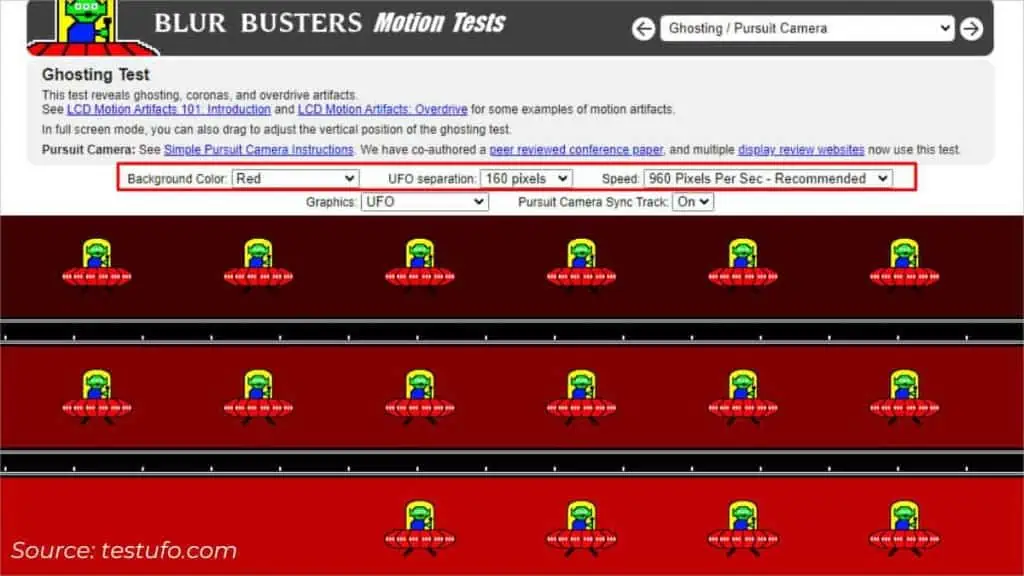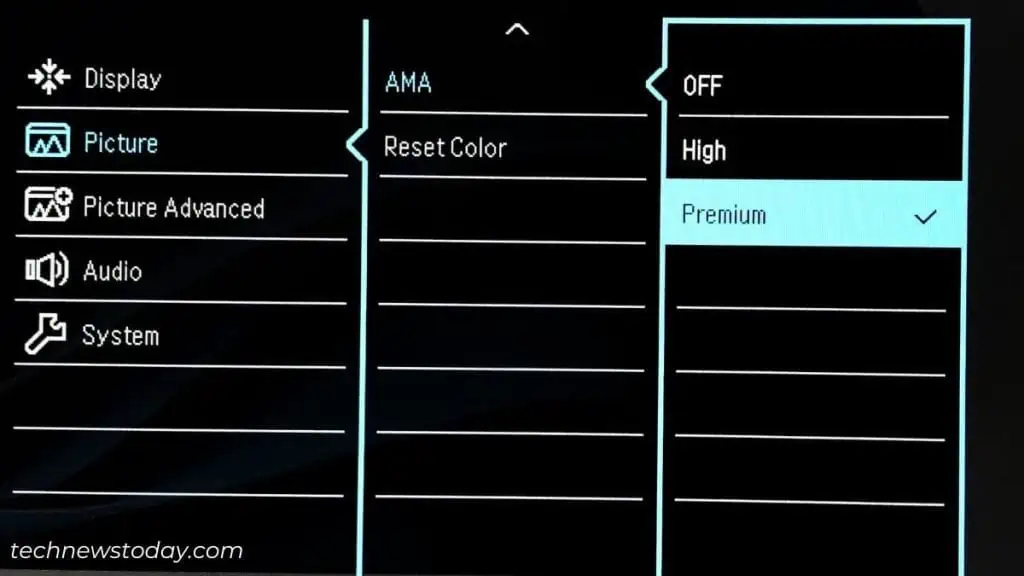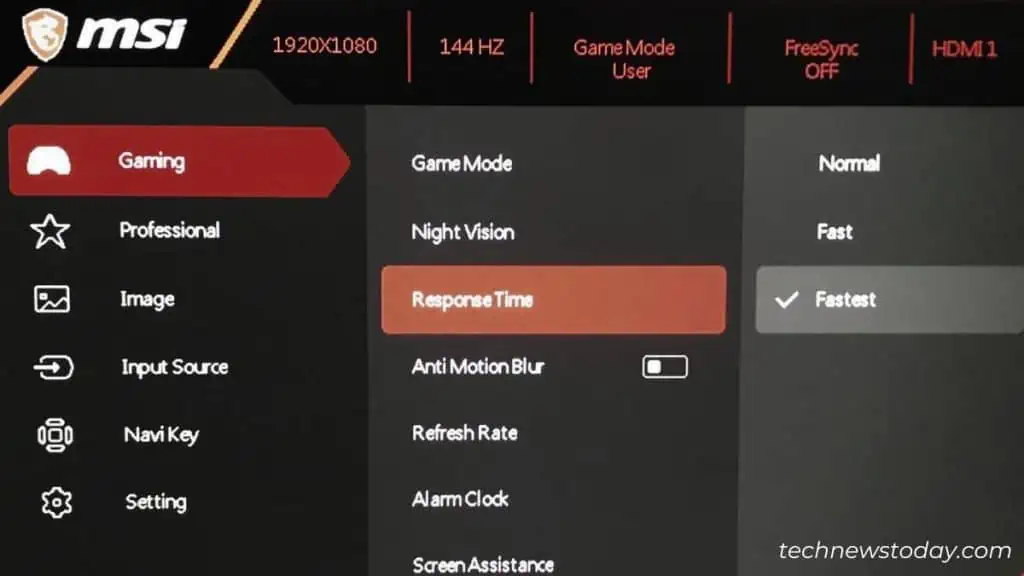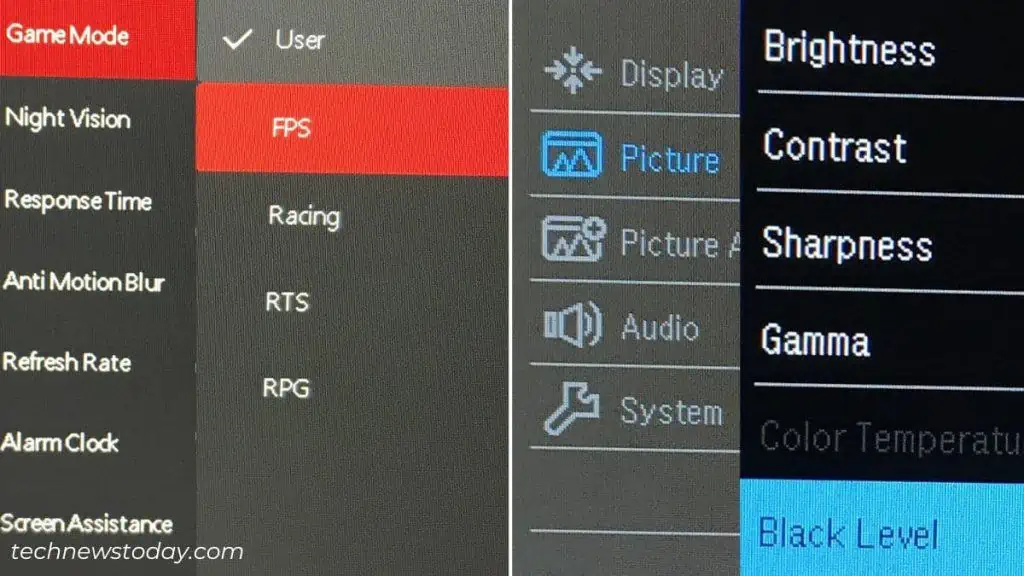Monitor ghosting is a common issue seen during fast-paced videos or whileplaying first-person shooters.
This visual artifact causes a trail of pixels behind objects or texts, leading to disruptions and reduced clarity.
Put simply, it looks like a blurry ghost that follows something moving on your screen.
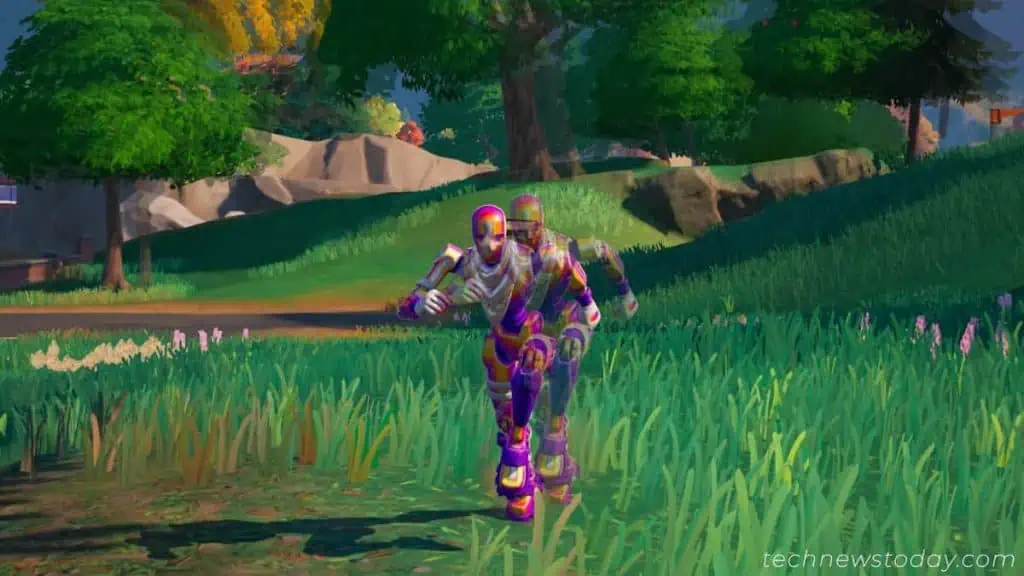
Take a peek at the below snap to understand what ghosting really looks like. The moving character exhibits a shadow-like effect. The same case is with the trees in the background, giving a blurry appearance.
Without a doubt, it can have a significant impact on your gaming experience. I’ve been in the same boat – missing clean headshots in FPS and failing precise turns in racing games.
Not just that! Even quick scrolling through long documents or watching action scenes can become a tough task.
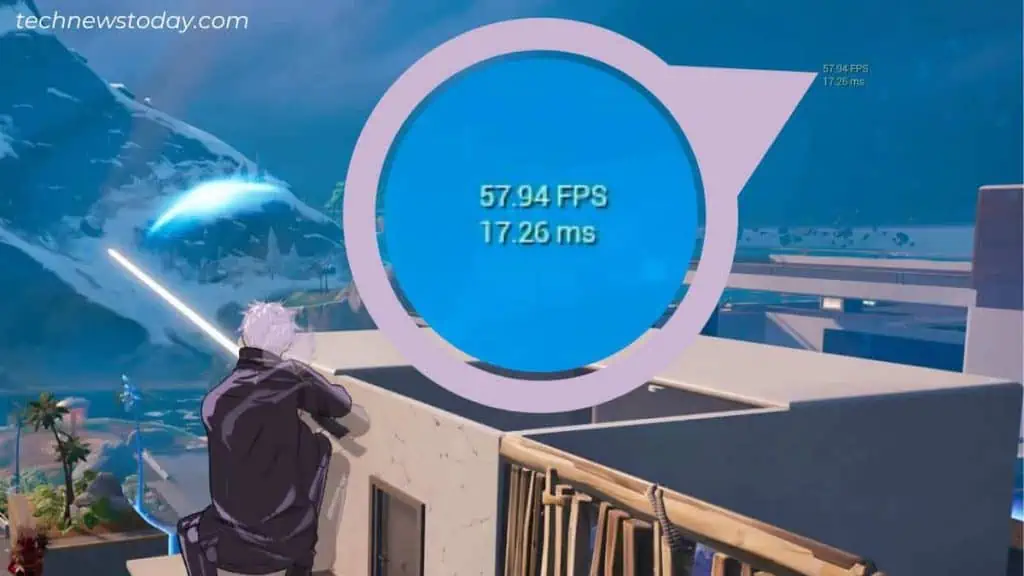
You certainly wouldn’t want to be stuck with these ghosting effects. Adjustingoverdrive settings,refresh rate, andupdating graphics driverscan help minimize such distortions.
However, they might not always be of help. VA display panels experience the most ghosting and such is the case with low-budget IPS too. If none of the basic troubleshooting helped,upgrading the monitorwould be the last resort.
What Causes Monitor Ghosting?
It isn’t worth it if you don’t achieve the smoothness you desire, especially when engaging in fast-paced video games. Here are the main reasons why you could be noticing ghosting effects.
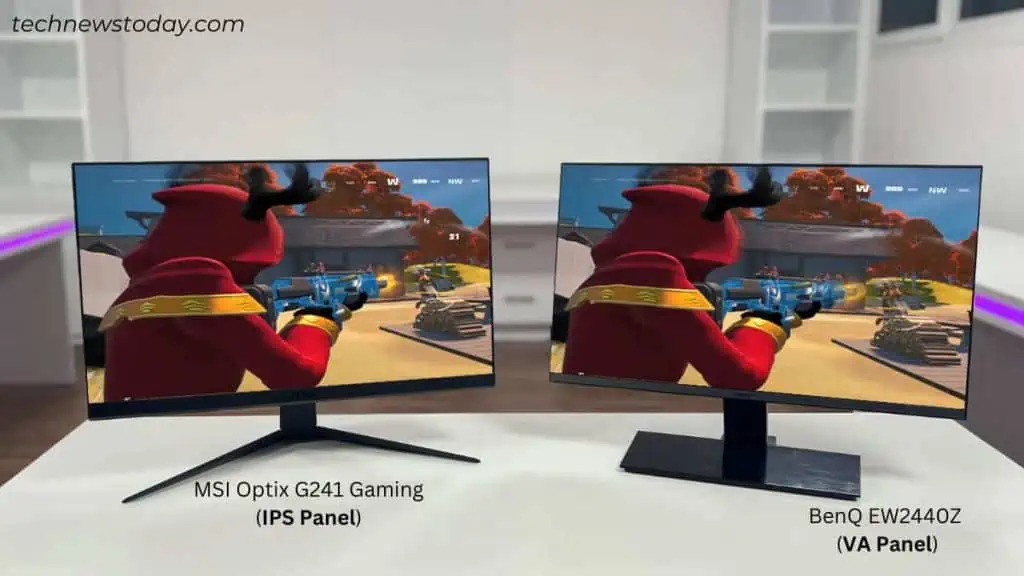
The main cause is a slow (or high) response time. Most monitors today are marketed to offer <5 ms MPRT (Moving Picture Response Time) or G2G (Grey-to-Grey). Despite that, mostLCD displays are still prone to these artifacts.
As we know, displays are composed of pixels that go through a series of brightness and color changes. That’s how we actually perceive moving images, and there’s always acertain time taken during the process.
Usually, this is impacted by the liquid crystals that are responsible for changing the pixel brightness. They need to react to the voltage changes, and the time taken to do so is called theresponse time.
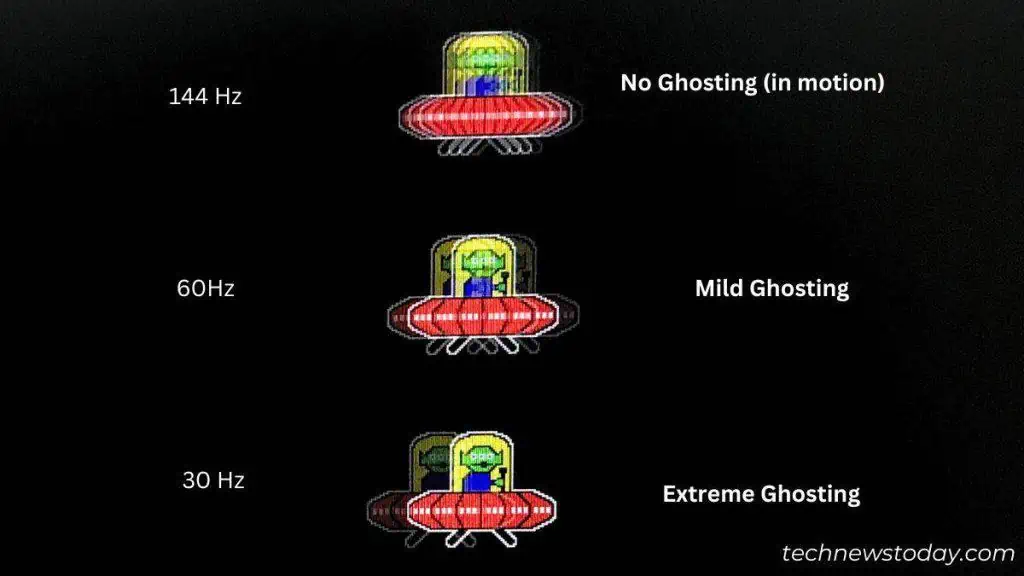
If this happens too slowly, thenext image gets refreshed even before the complete shift of the previous frame. That’s the reason you see a shadow/trail behind the moving object. However, such visual defects aren’t quite noticeable during general desktop use.
If your monitor refreshes thereceived frames (from CPU/GPU) much slower, it can lead to ghosting. This is because the new frame can’t keep up with the fast-moving object on your screen. Thus, there’s a trailing shadow-life effect at their edges.
